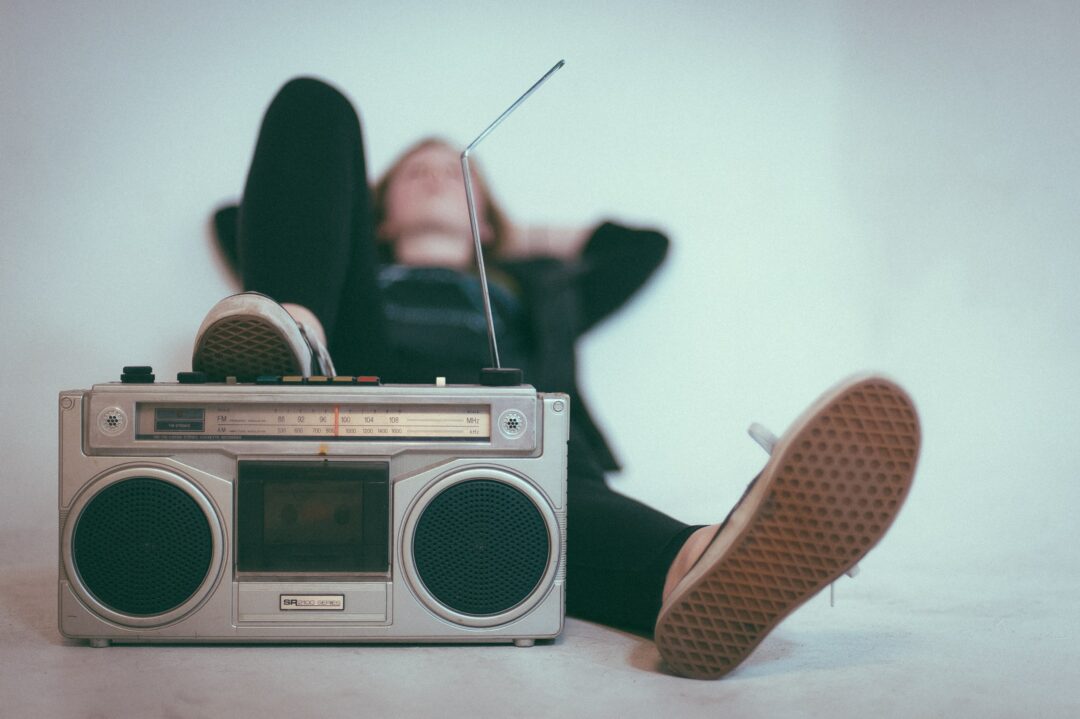Despite the radical transformations of the media landscape in the last ten years alone, radio is hanging in there and refusing to become a fixture of a bygone era. The oldest mode of transmission is keeping its relevance by continuously adapting to the needs of musicians and the habits of music fans. Before you argue it has become outdated, learn how it has been reinvented.
This article will cover how radio waves have continued to reinvent themselves, stats to prove that radio play is still worth garnering, and a guide on how to get yourself on broadcaster’s A-lists.
The Evolution of Radio
In 1979, it was decreed that video killed the radio star, but it appears that the new wave synth-pop outfit spoke too soon. Radio could have easily faded into obscurity if it didn’t metamorphize in the following ways.
-
The Digitalisation of Radio
Traditional radio broadcasting is still hanging in there, but the digitalisation of radio was fundamental to its survival. From on-demand radio shows to partnering with streaming services to defying previously imposed geographical boundaries to the higher quality of DAB+ transmissions, every evolution radio has undergone has enabled broadcasters to provide a more flexible, enjoyable, and convenient listening experience.
-
The Adoption of an Analytic Approach
Music fans who regularly tune into radio stations aren’t short of options. The competition between stations is fiercer than ever, which is why many broadcasters have adopted a data-driven approach to keep their audience engaged. Data and analytics can allow radio stations to target and engage with specific audiences; the data often includes social media interactions, listening habits and listener demographics.
-
The Introduction of Visual Radio
Just like Windows Media Player used to mesmerise users with hypnotic graphics, radio stations haven’t missed this trick. Visual radio can only be used and enjoyed on internet radio services; it employs multimedia software and tools to broadcast visual content, which can range from fully-fledged music videos to simple promo slideshows. Adding a visual layer to broadcasts can add information about a band, provide context to the music, or simply add an aesthetic point of interest.
-
Pandering to the Demand of On-Demand Content
Gone are the days when people enjoyed content on a broadcaster’s schedule. Just as fewer people watch TV shows as they air, media consumers prefer to engage with content when it is most convenient for them. This radical shift in radio transmissions has made radio far more convenient and accessible; it has also enabled independent artists to reach a wider audience and given music companies fresh ideas on how they can monetize their content.
How Relevant is Radio in 2023?
In 2023, commercial radio is celebrating its 50th anniversary, and plenty of music fans are keen to attend the party.
Earlier this year, Ofcom reported that 88% of the adult population in the UK tune into some form of radio station for at least 20 hours a week, including online, analogue and digital radio shows. However, there has been a marked shift towards online listening, with one in five listeners choosing to tune in via their smart speakers.
In April 2023, Mostly Media reported that commercial radio revenue grew throughout 2022 and into 2023. At the end of 2022, commercial radio stations reported a record-breaking revenue stream of £740 million. The CEO of Radio Centre, Matt Payton, stated that radio’s performance is continuing to defy all expectations; even the challenging economic times can’t rain on the 50th-anniversary parade. He may have been speaking about brands, not bands when he stated that radio campaigns increase awareness by 49%, relevance by 24%, trust by 32%, and consideration by 18%, but how can that not apply to musicians?!
How to Get on the Radio as an Independent Artist
Getting airplay as an independent artist can be challenging due to the competition and the dominance of major record labels. However, with persistence, strategy, and quality music, it’s certainly possible. Here’s a step-by-step approach to help you increase your chances:
Create Quality Music: Before anything else, your music must be high quality. Ensure it is well-mixed, mastered, and radio-ready.
Research Stations: Not all stations will be a fit for your music. Look for local, college, community, and independent stations that play your genre or have a reputation for supporting independent artists.
Prepare a Press Kit: This should include:
- A short biography (story or unique angle about you)
- Contact information
- High-resolution photos
- A CD or digital copy of your song(s)
- Press clippings, testimonials, or notable performances
- Social media and website links
Network: Personal relationships can be a key element to success on the radio waves. Attend music conferences, industry events, local shows, and anything else where you might meet DJs, hosts, or station programmers.
Use Digital Platforms: Services like SubmitHub can help you send your music to a range of stations and bloggers. Some charge a fee, so do your research and decide what’s right for you.
Send Your Music: When you’ve identified the right stations and contacts:
- Address them personally (avoid generic greetings)
- Briefly introduce yourself
- Share why you believe your music is a fit for their station/listeners
- Include your press kit and music
- Follow up after a week or so if you haven’t heard back
Foster Local Support: Engage with your local community. If you can build a strong local following, local stations will be more likely to take notice and play your music.
Internet and Satellite Services: Don’t forget platforms like Pandora, Spotify, Apple Music, or SiriusXM. They might offer more opportunities for independent artists compared to traditional FM/AM stations.
Stay Persistent and Patient: It’s often not about getting on the radio on your first try but building relationships and consistently delivering great music.
Hire a Plugger: If you have a budget, consider hiring a radio promoter who already has established relationships with stations. They can pitch your music on your behalf.
Stay Active: Being active on social media, having consistent gigs, or getting press can increase your chances. Broadcasters are more likely to play artists who are making waves in other ways.
Alternative Routes: Consider appearing on broadcasts as a guest, getting interviewed, or performing live. This can give you exposure even if they aren’t playing your track.
–
For more music marketing advice and inspiration, keep following our blog or submit music to our indie blog, which always has space for independent artists looking to leave their footprint on the music industry and build their legacy. As a top 10 UK music blog run by a team of grassroots music advocates, we’re always looking to discover the next breakthrough artists to champion!
Article by Amelia Vandergast





No Comments